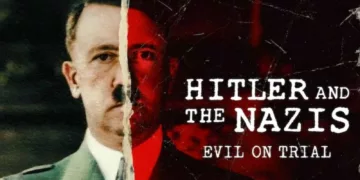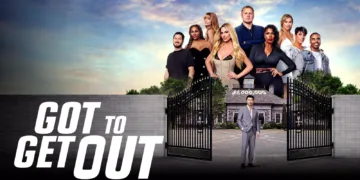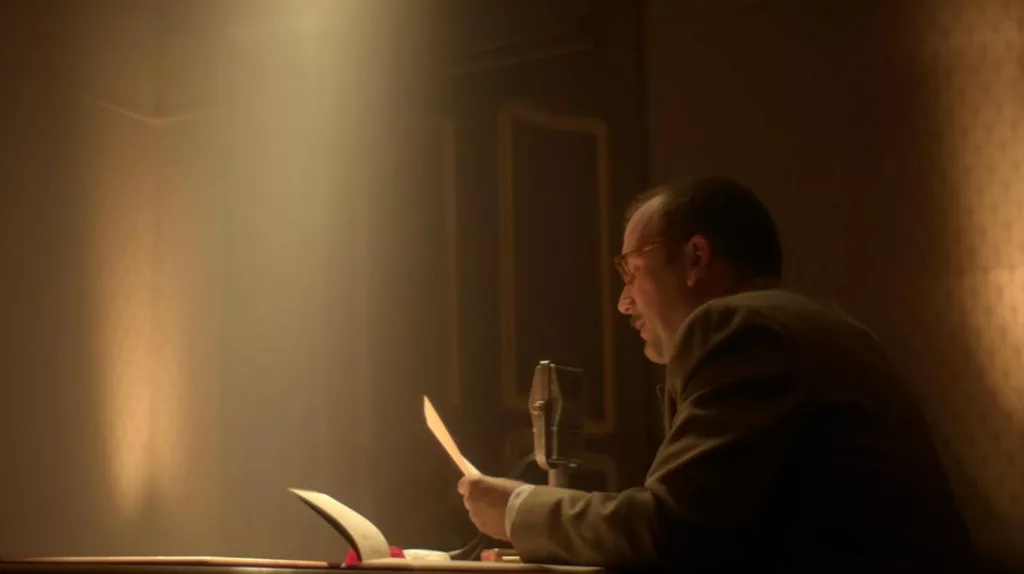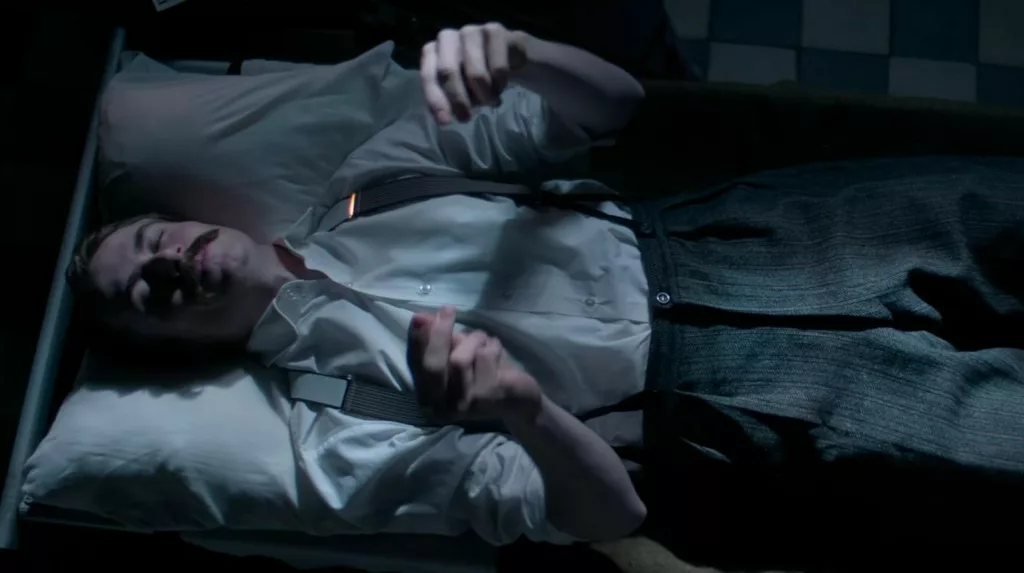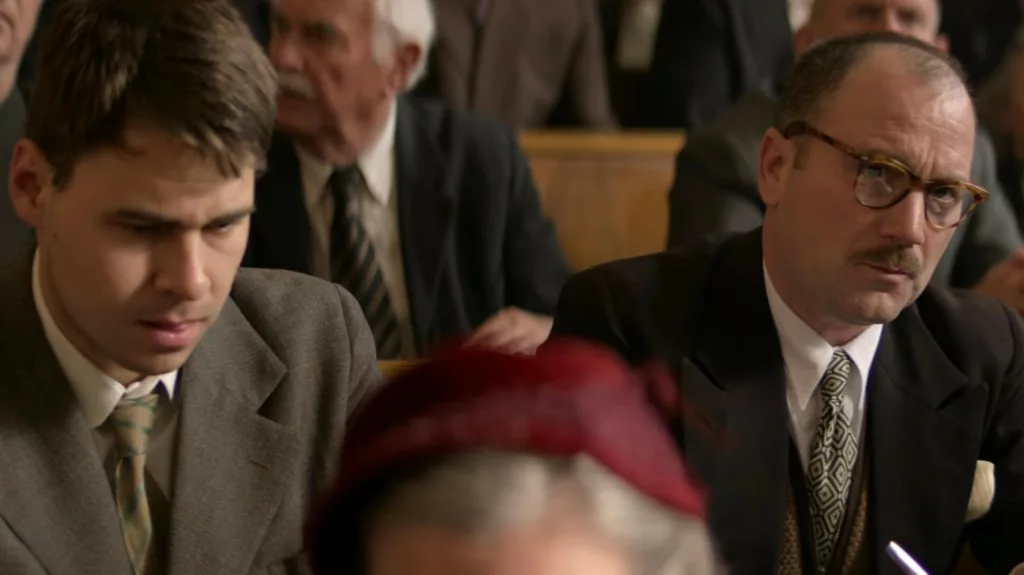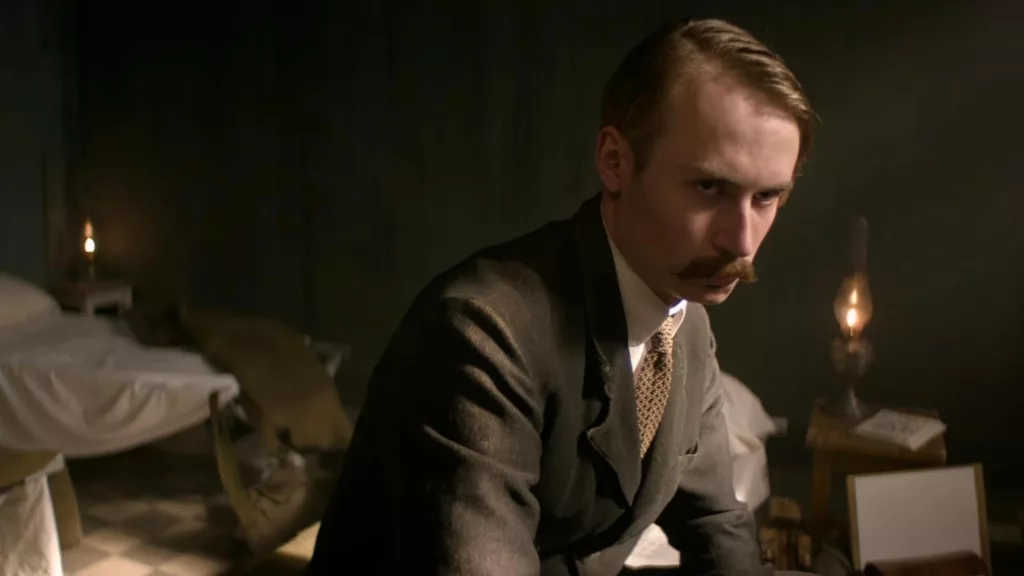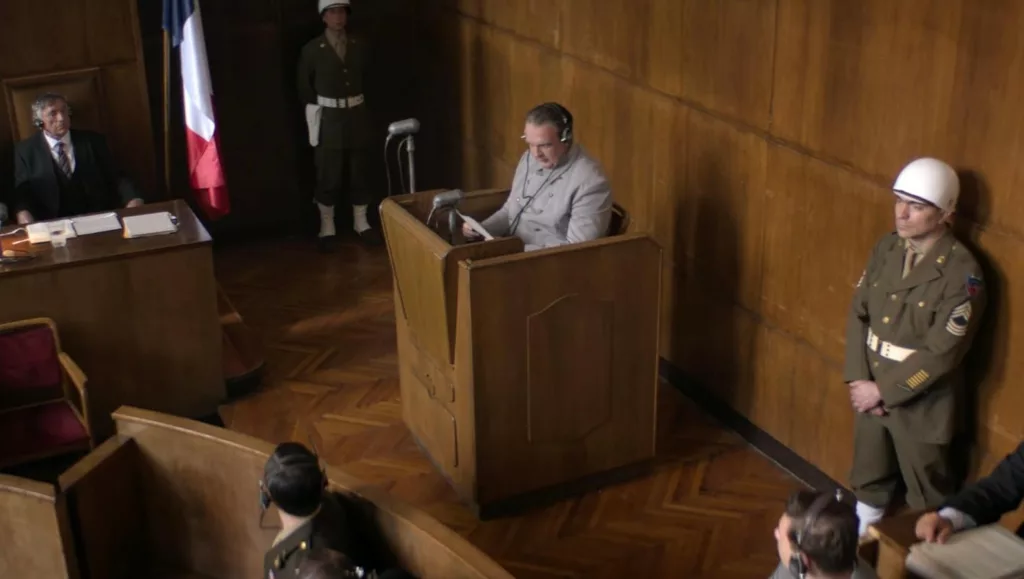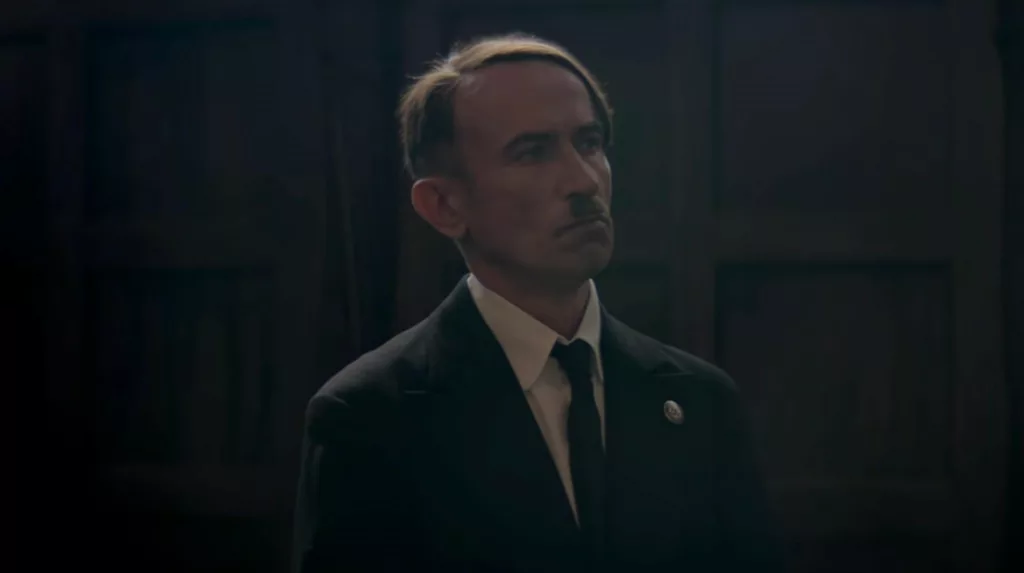We learn a great deal about the formative influences on Hitler’s psychology in his younger years. Experiencing hardships as an orphaned child in Austria likely sowed early seeds of resentment. Failing to gain entry to the Academy of Fine Arts in Vienna and thereafter drifting as an unemployed drifter exposed him to nationalist and antisemitic rhetoric stirring in post-WW1 Germany. These bitter experiences seemed to stoke his sense of personal alienation and anger at society.
As the documentary explores Hitler’s life at this stage through historical accounts and visual reenactments, you gain a sense of how a lonely, frustrated man may have been drawn to facile explanations for his own dilemmas, blaming ethnic and political groups.
From there, it did not take much to fan the flames of his delusions of racial supremacy and his warped vision of restoring national pride and purpose. The scenes depicting Hitler’s orations tapping into public unrest in 1920s Munich show an unsettling charisma and skill for manipulation emerging.
We watched his megalomania and contempt for democracy steadily intensify as his extremist agenda took hold. Archival footage contrasts sharply with the staged sequences, both conveying the chilling normalization of brutality.
Though the particulars of Hitler’s psychology remain debated, this documentary assembles compelling evidence that backgrounds of rejection and grievance interacting with a volatile historic moment helped incubate one of history’s most monstrous leaders. Its examination of these human factors reminds us how indifference and inaction enable the worst in human nature to metastasize.
Growing Up in Austria
We explore Hitler’s origins through vivid recreations of his childhood in Austria at the turn of the 20th century. Born in 1889 to working-class parents, young Adolf faced hardships as an orphan when his mother passed. Though bright, he struggled in school. Visuals transport us to Hitler’s Vienna years, where rejection from art school intensified his simmering anger.
Unemployed and drifting in post-war Germany, Hitler discovered a recipe for unity: blame outsiders for societal ills. He joined small nationalist groups espousing antisemitism. As the tumult of revolution and unrest following World War I rocked Munich, Hitler saw his chance.
Dramatic flashbacks show Hitler’s metamorphosis. By 1920, his fiery oratory electrified crowds with visions of German revival, stoking patriotism while scapegoating Jews and leftists. The Munich putsch that year failed but only increased Hitler’s notoriety. Imprisoned, he penned Mein Kampf and honed his message, blaming Marxists and “international Jewry” for defeat.
Upon release, Hitler steadily grew his party. By 1930, in the throes of an economic crisis, millions related to his national pride pitch. As chaos ensued and fears mounted, moderates found refuge with the Nazis, now Germany’s second-largest party. January 1933 saw Hitler appointed Chancellor. His rise revealed how isolated discontent, given a shared purpose and allowed to rage unchecked, breeds the darkest tyranny.
Documenting the Darkness
We learn how Nazi policies intensified at alarming speed. Early on, Hitler took symbolic actions like banning books by Jews or those challenging Aryan rule. But the 1935 Nuremberg Laws stripped Jews of citizenship, banning marriage or sexual relations with Aryans.
William Shirer bears witness as Jews are openly attacked and barred from schools or jobs. We see the fatal results as thousands flee, only to be detained like the ill-fated passengers of the MS St. Louis. Hitler consolidated power through propaganda, portraying himself as Germany’s savior. People were compelled to idolize their dictator, with signs reading “Hitler is Germany—Germany is Hitler.”
The Eastern Front brought total war. We observe Hitler’s genocidal ambitions emerge through chilling archival footage of Wehrmacht units massacring Ukrainians and Baltic peoples. As Russia was overrun, Hitler’s fixation on eliminating Jews and Slavs became unbound violence in conquered lands. Visuals confirm the unthinkable destruction wrought by Einsatzgruppen death squads.
Perhaps the series’ hardest scenes recount industrialized murder in Polish camps. Through survivor accounts and rare clips from liberation, we grasp what mankind is capable of at its very worst. Berlinger spares no detail in documenting the barbarism that metastasized under a tyranny founded on racial hatred and lies. It serves as sobering proof of the need for constant vigilance against those who would dehumanize others and trample on freedom. Some evils must never be forgotten, lest we forget our own capacity for good.
Threading History with a Reporter’s Voice
Director Joe Berlinger found an ingenious way to utilize the work of American journalist William L. Shirer. As one of the few international correspondents reporting from Germany in the 1930s, Shirer bore witness to Hitler’s rise. His dispatches didn’t just inform listeners at home; they now allow us to practically experience history unfolding beside him.
Berlinger mines Shirer’s eloquent written accounts and archival radio broadcasts. An AI recreates Shirer’s voice to narrate pivotal moments, granting an intimate perspective otherwise lost. We hear the reporter’s uncanny ability to convey atmosphere and symbolism, like his description of Göring diminished from the war’s end. Shirer observed with both journalistic objectivity and human empathy, comprehending the seductive power of Hitler’s oratory.
By threading these firsthand threads from Shirer throughout the documentary, Berlinger imbues dry facts with drama and immediacy. Rather than merely rehashing details, we see the full narrative taking shape before Shirer himself. His presence acts as a conduit connecting Hitler’s early regime to the post-war trials. No modern journalist could have such a uniquely incisive role, making Shirer an ideal symbolic guide.
Berlinger’s innovative use of Shirer lends authenticity and draws out new meaning from history recited countless times. With a reporter’s keen eye and gifted prose, subtle insights are gleaned anew, even from familiar events. His witness ties the documentary’s diverse components—archival footage, interviews, and dramatizations—into a cohesive journey of revelation.
Weaving the Threads of History
Berlinger employs innovative visual techniques that transport us directly to the past. Archival footage is meticulously colorized, reviving faded images from a time that risks slipping from view. His clever editing cuts seamlessly between real and reenacted moments, keeping us rapt as history resurfaces in living color.
Interviews with experts and dramatizations featuring talented actors further immerse us. But Berlinger’s sharpest tool may be his skillful blending of these threads. Reenactments contextualize archival clips through recreated settings, and interviews offer analysis of what we see. His dynamic storytelling weaves together diverse mediums into a cohesive narrative tapestry.
Rather than addressing us from some distance, Berlinger wields technology and talent to pull us across the divide of decades. Colorization makes the past feel startlingly immediate, while slick scene transitions blur the lines of reality.
Through such techniques, ugly truths that might otherwise dull with time are revived in vibrant detail, ensuring the lessons of an age too easily forgotten remain vividly illuminated. Under Berlinger’s guidance, visual elements combine persuasively to offer fresh eyes on history and keep memory from dissolving into the evening’s fading light.
Framing History at Nuremberg
The trials that followed Germany’s defeat offered more than just prosecution; they helped ensure the full horrors of the Nazi regime would be recorded for history. By centered his documentary on this watershed event, Berlinger knew it would anchor viewers in the facts while keeping focus on the aftermath, which was nearly as gripping as the terrible acts that preceded it.
We learn how American Robert Jackson convinced the Allied powers that wrongs of such scope demanded a coordinated response. The tribunal setting was thus established, a precedent for international law. But proceedings took courage, with survivors recalling gut-wrenching. Staff at Auschwitz spoke of the industrialization of murder and children torn from their mothers’ arms. Film proof could not be denied.
Before the judges, the remaining leaders attempted vain defenses. Some, like Von Ribbentrop, claimed ignorance?! Others, like Goering, stripped of pomp and power, cut diminished figures. But none swayed from the reality unearthed: Germany had pursued an illegal war and enabled the industry of extermination.
In placing their actions under the highest legal lens, the full truth was ensured for history books. The defendants’ fates were determined. But more significant was foiling any prospect that their crimes might be reduced to mere policy errors.
Through its focus on Nuremberg, the documentary shines light on heroes who committed certain wrongs of that scale that would never fade into a half-remembered footnote of a darker time. Future generations must never forget.
Keeping History’s Harsh Lessons Front and Center
It’s easy to understand why some might wish to relegate the terrors of Nazi Germany to the past. Yet, as the documentary shows, letting memory fade risks paving the way for those dark acts to somehow be seen in a kinder light. Through its personal snapshots and inspection of how Goebbels’ propaganda grew to infect an entire nation, viewers face the full truth of what can happen when hate goes unchecked.
Berlinger keeps the focus on survivors willing to relive horrors, ensuring their recollections along with stockpiles of monochrome images maintain visceral impact. But he similarly knows it’s not enough to confront the wrongs of the past alone.
By glancing at current politics through the lens of Hitler’s demagoguery, he spotlights cues that show that while faces change, underlying threats to tolerance remain. It’s a sobering reminder for all seeking to learn lessons that, no matter what future history books hold, must stay vividly remembered for as long as dangers of extremism lurk in any form.
Only by keeping memories fresh can we truly honor those whose lives were stolen and hope crushed. If this documentary spurs some to prevent even small injustices or tilts thinking away from simplistic solutions, it will have well achieved its aim of standing watch against the darkest parts of human nature, which we’d do well to stay ever-vigilant against.
Remembering Lessons of a Dark Past
This documentary tells a difficult story with power and care. By blending accounts from those who witnessed Nazi atrocities firsthand with vivid recreations that make the past feel urgently present, Berlinger ensures these events can educate audiences far removed from World War II. Shirer’s compelling writings further contextualize the hate that consumed a nation.
Presenting the rise of Hitler alongside the Nuremberg trials also hammers home how quickly laws can crumble when good people stay silent. As these monsters tried to evade guilt, their fates served as a reminder that no one is above accountability for their actions or the horrors they enable. Both lessons feel especially vital as today’s leaders increasingly dismiss facts for fiction and scapegoat the vulnerable.
While the documentary covers well-trodden history, Berlinger’s thoughtful approach ensures these crimes against humanity remain not just a chapter in textbooks but a call to consciousness in every generation.
Only by keeping watch against demagoguery, disinformation, and the dehumanization of others can we match the Allies’ victory with peace that lasts. As threats to democracy persist, may this film spur all people of good faith to stand guard against any iteration of tyranny that denies human dignity. Our world can never move past the evils of the past until we learn from them each and every day.
The Review
Hitler and the Nazis: Evil on Trial
Berlinger's sobering documentary proves itself a powerful educational tool that brings continued relevance to some of history's darkest days. By blending accounts and reenactments, it sets aside a distance of time to deliver lessons that feel urgently critical amid today's politics. While covering ground well-trodden, the filmmaker's thoughtful approach ensures these events stay not just as facts learned but as a call to consciousness that echoes until tyranny finds no hold on this Earth. It is a work that honors memory through meaningful memorials.
PROS
- Blends archival footage and reenactments effectively to put the viewer closer to events
- Draws clear parallels between the rise of Nazi propaganda and modern disinformation.
- Relies heavily on firsthand accounts from William Shirer to contextualize Hitler's rise.
- Makes the complex history vivid and accessible for newer audiences.
- Promotes thoughtful reflection on how democracy can be eroded.
CONS
- May cover familiar ground for those well-versed in WWII history.
- Reenactments sometimes risk coming across as sensationalized.
- Jumps back and forth in timeline, which could at times be confusing.
- Places heavy focus on Hitler without always giving a full picture of the Nazi Party.
